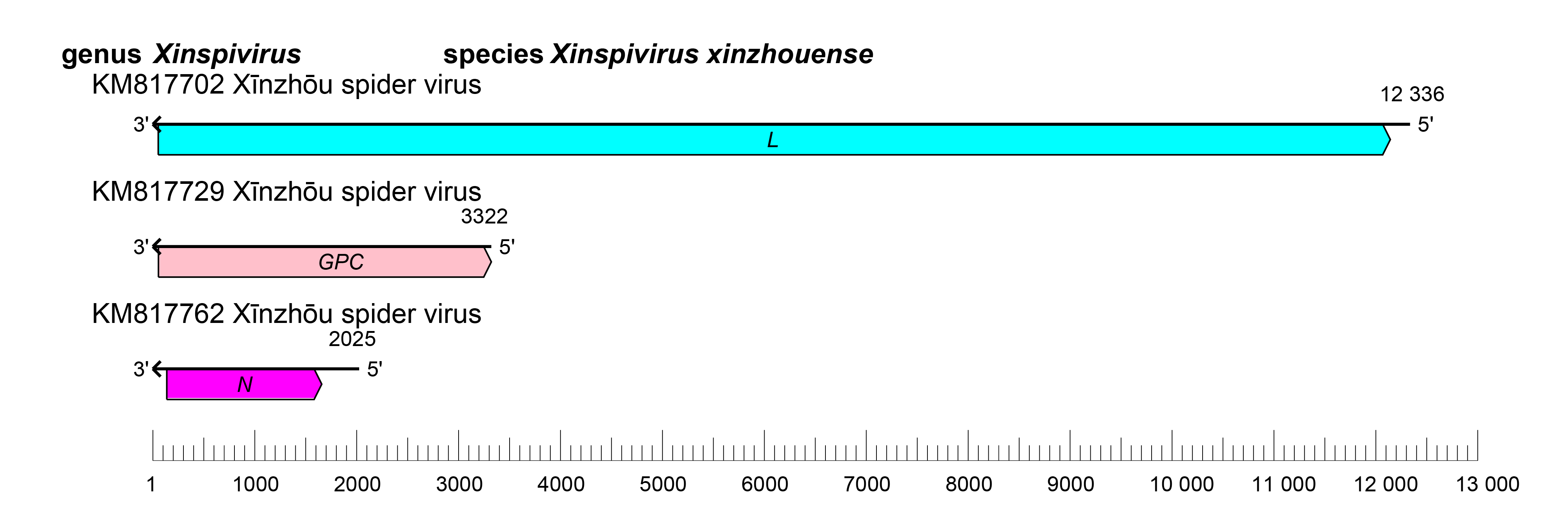Family: Nairoviridae
Genus: Xinspivirus
Distinguishing features
Xīnzhōu spider virus (XSV) is the only classified xinspivirus. XSV infects araneid spiders (Li et al., 2015).
Virion
Virions are unknown.
Nucleic acid
Xinspiviruses have trisegmented negative-sense RNA genomes of 17.7 kb (small [S] segment: 2.0 kb; medium [M] segment: 3.3 kb; large [L] segment: 12.3 kb). Xinspivirus genomic segments are expected to assume circular forms via non-covalent binding of complementary and conserved 3′- and 5′-terminal sequences.
Proteins
Based on sequence data only, xinspiviruses likely express three structural proteins: nucleoprotein (N), glycoprotein precursor (GPC), and large protein (L).
Genome organization and replication
The S segment encodes N, the M segment encodes GPC, and the L segment encodes L (Figure 1 Xinspivirus).
 |
| Figure 1 Xinspivirus. Schematic representation of xinspivirus genome organization. The 5′- and 3′-ends of each segment (S, M, and L) are, by analogy to other nairovirids, predicted to be complementary at their termini, likely promoting the formation of circular ribonucleoprotein complexes within the virion. |
Biology
XSV was discovered by high throughput sequencing in a brown sailor spider (araneid Neoscona nautica (L. Koch, 1875)) in China (Li et al., 2015). Replication-competent xinspivirus isolates have not yet been obtained, and hence xinspivirus biology remains to be elucidated.
Species demarcation criteria
The genus currently only includes a single species.

